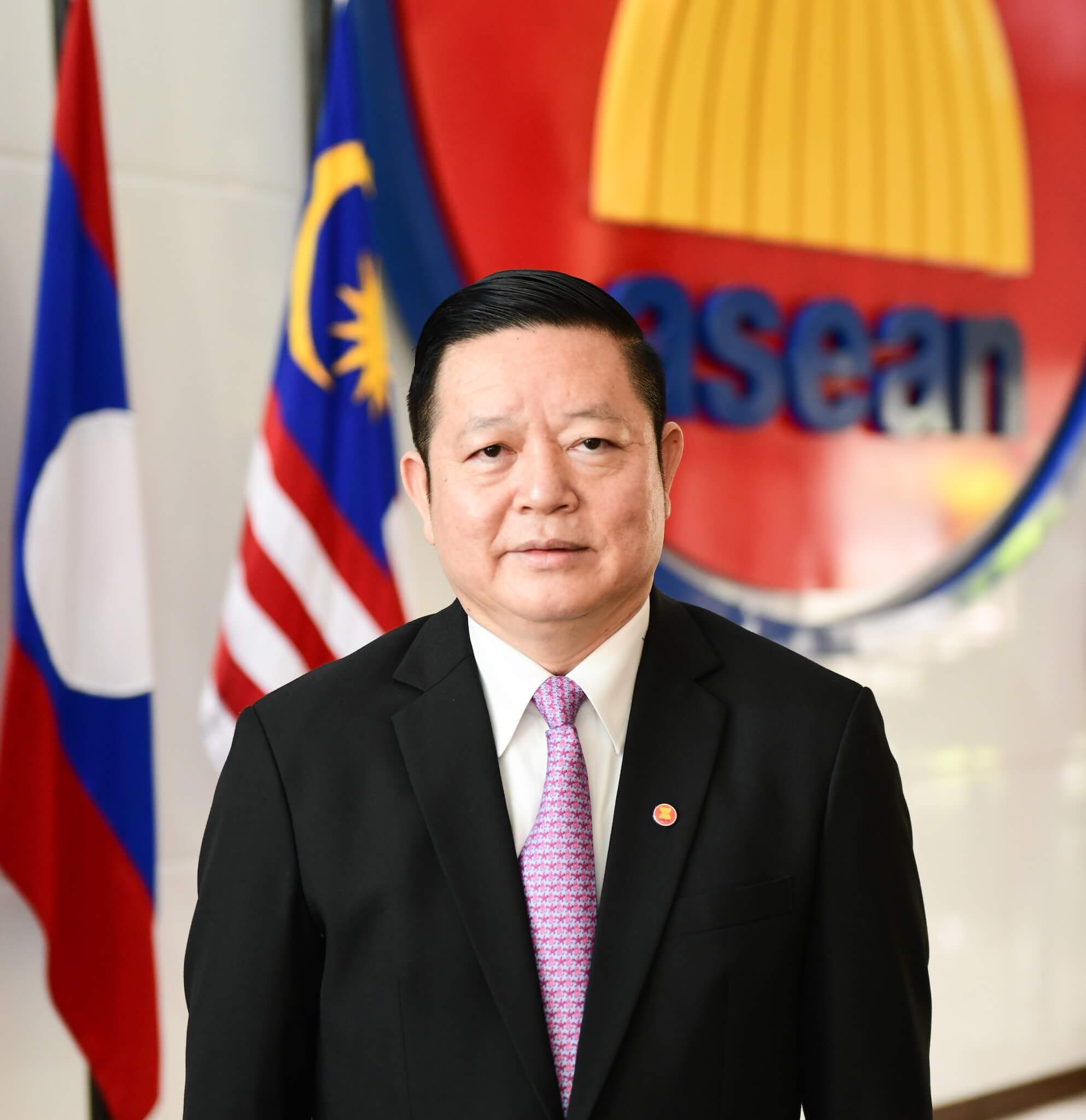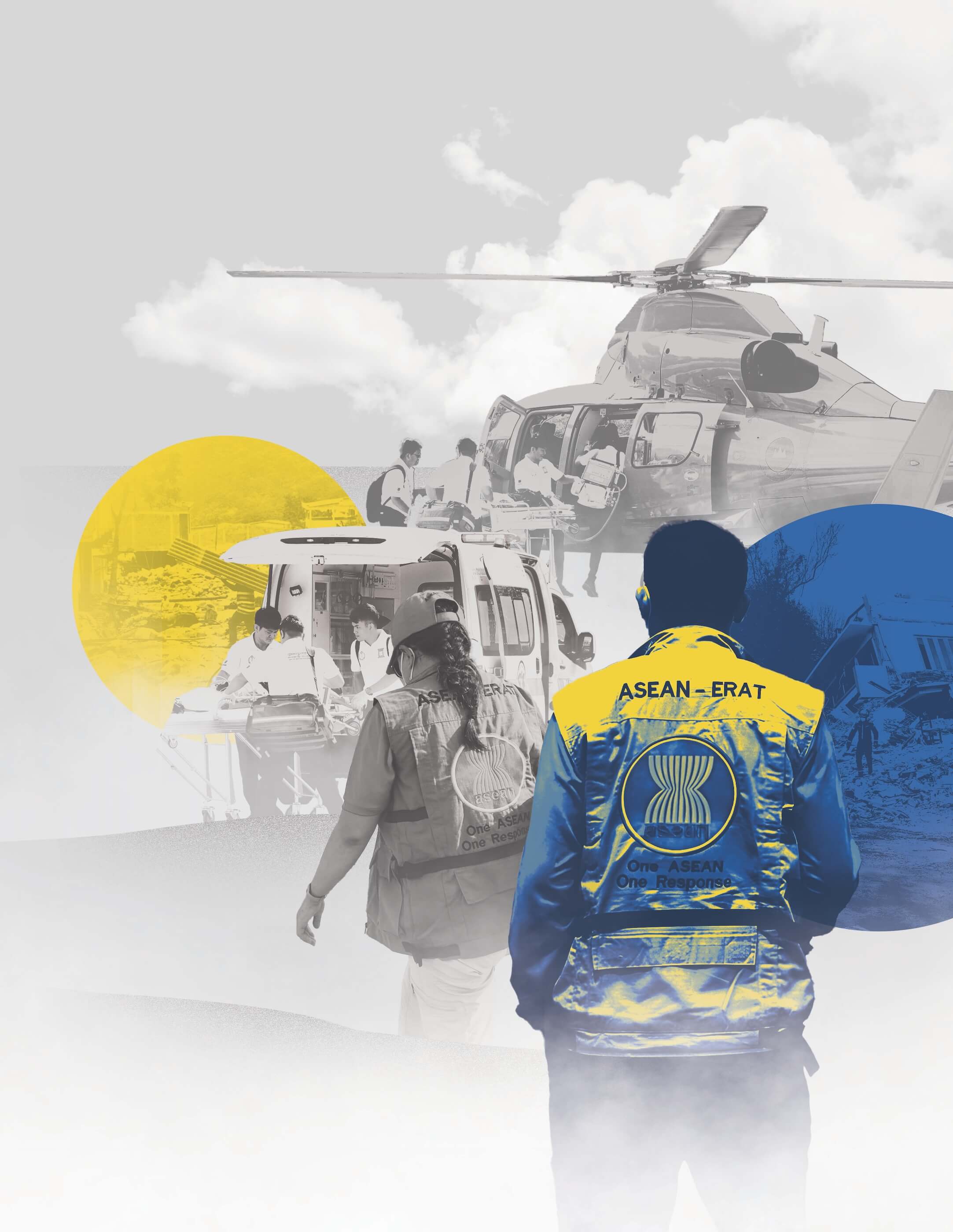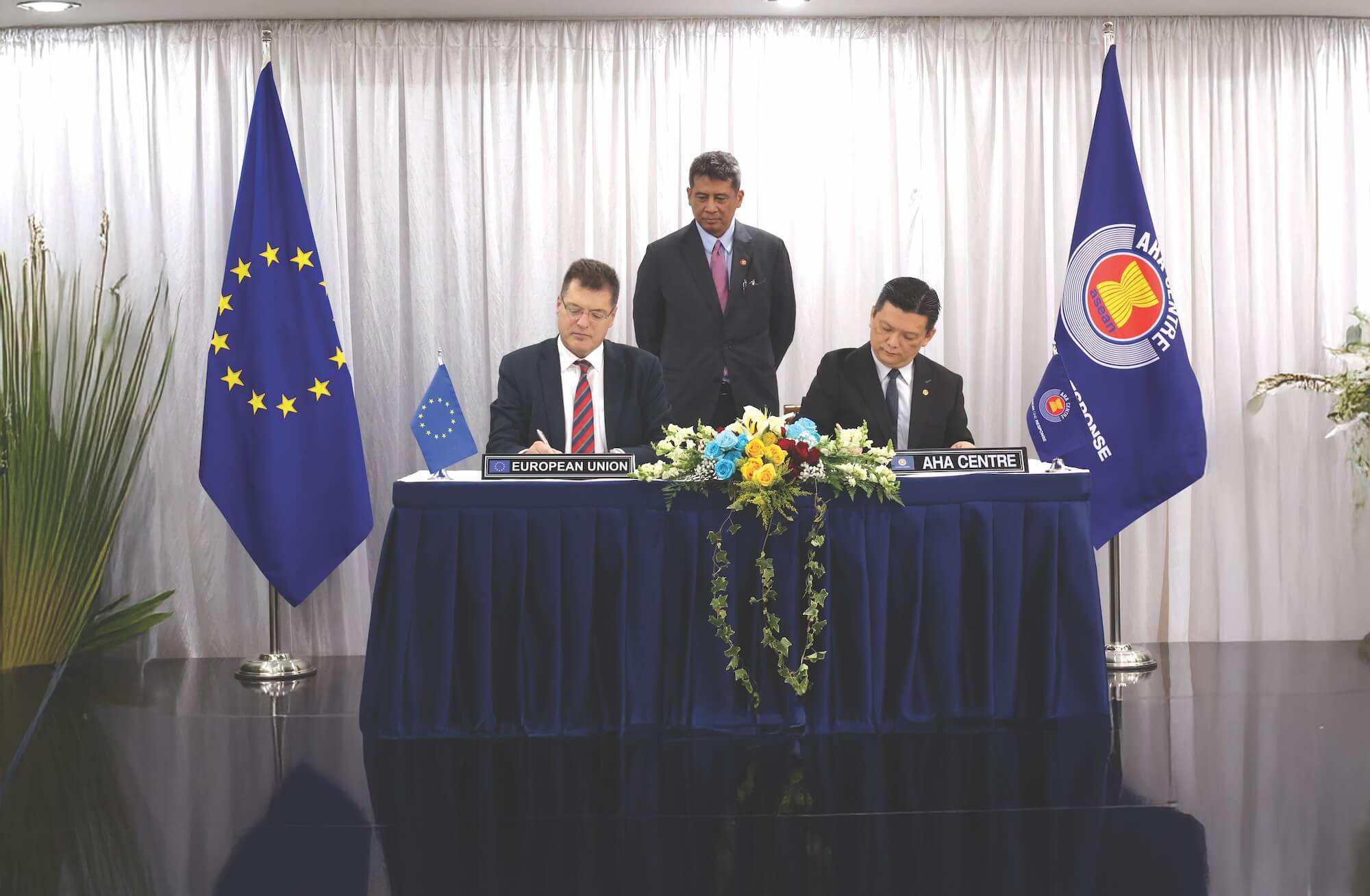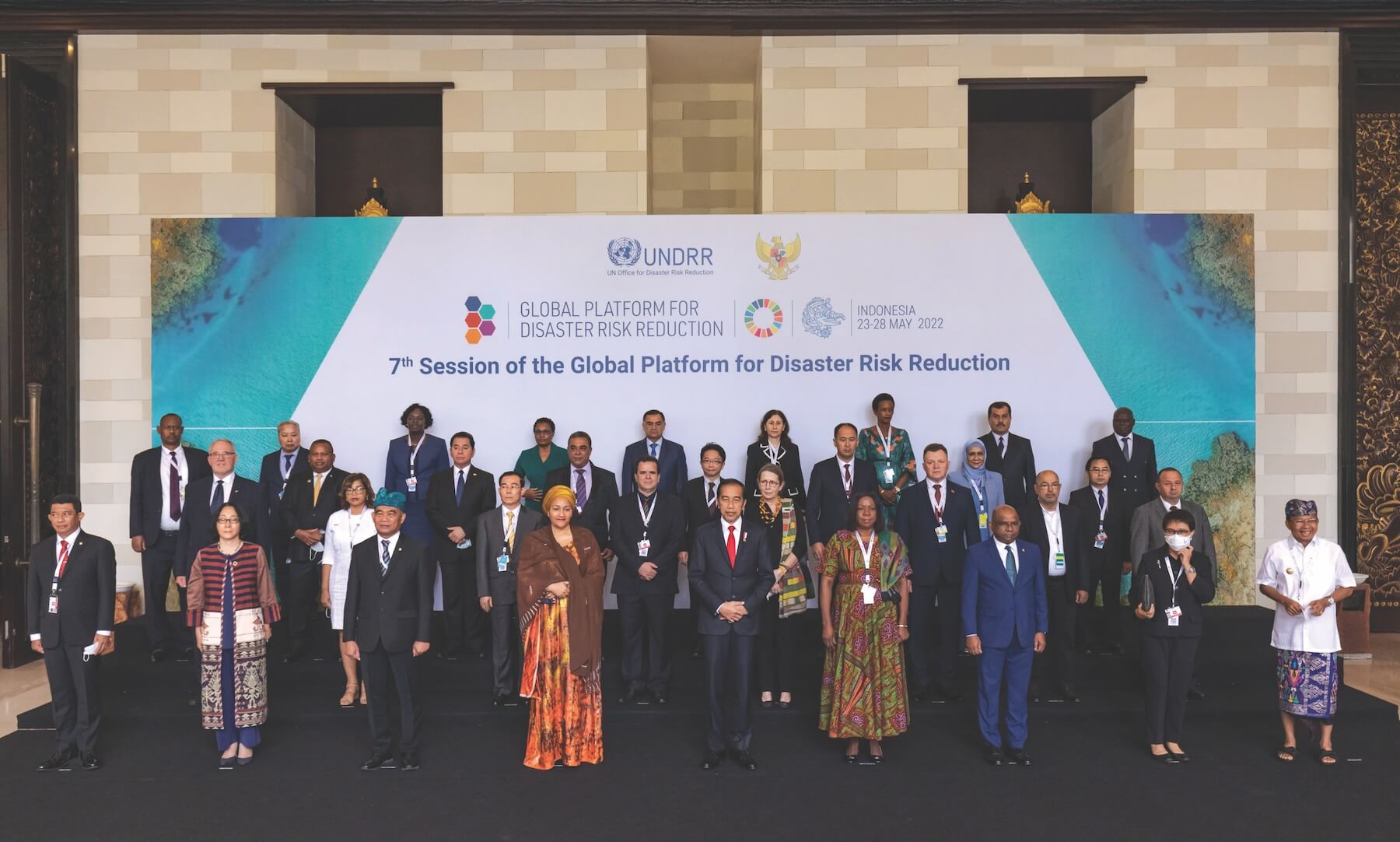



The frequency, scale, and complexity of disasters are escalating across Southeast Asia—driven by climate change, rapid urbanisation, and emerging transboundary risks. These growing threats strike at the very foundations of our development, stability, and shared prosperity.
Over the past two decades, ASEAN has established strong foundations for regional disaster cooperation. A major milestone was the 2015 ASEAN Ministerial Meeting on Disaster Management, which launched the ASEAN Vision 2025 on Disaster Management. This transformative document enabled ASEAN to develop a structured, cooperative, and increasingly effective regional system, positioning it as a global model for disaster management and humanitarian coordination.
As we now set our sights on a post- 2025 horizon, we must carefully assess the lessons learned, consolidate our achievements, and identify the key enablers that will ensure continued progress while shaping a more ambitious, integrated, and future-ready disaster agenda for our region. In this spirit, the ASEAN Community Vision 2045, adopted by ASEAN Leaders in May 2025, presents a powerful opportunity to reimagine our regional resilience.
It challenges us to envision an ASEAN that is not only more capable of withstanding disasters but also more unified in anticipating, preparing for, and recovering from increasingly complex crises. Disaster resilience is not a standalone priority—it underpins our broader aspirations for inclusive and sustainable development, regional integration, and social protection.
At the 46th ASEAN Summit in Kuala Lumpur, our Leaders adopted ASEAN 2045: Our Shared Future—a landmark roadmap that charts our regional trajectory for the next two decades. It embodies the shared ambition of Member States to adapt and lead amid an increasingly complex and uncertain global landscape. This comprehensive blueprint encompasses the ASEAN Community Vision 2045 and four supporting Strategic Plans—covering Political-Security, Economic, Socio-Cultural, and Connectivity dimensions. Together, they present a unified vision: a resilient, innovative, dynamic, and people-centred ASEAN by 2045. This marks the first time in ASEAN’s history that we have articulated a 20-year vision.
Disaster resilience is central to safeguarding the ASEAN Community Vision 2045. The Vision was crafted with full recognition of climate change’s accelerating impacts and the intensifying frequency of natural disasters across our region. These risks pose grave threats to lives, livelihoods, infrastructure, and progress. Therefore, strengthening disaster resilience extends far beyond emergency response—it is a fundamental prerequisite for achieving long-term regional stability and securing a sustainable, inclusive future for all.
Over recent decades, ASEAN has steadily built stronger regional cooperation and enhanced disaster management capacity. Guided by the ASEAN Vision 2025 on Disaster Management, our work rests on three strategic pillars: Institutionalisation and Communications, Finance and Resource Mobilisation, and Partnerships and Innovations. Together, these pillars have not only advanced the ASEAN Agreement on Disaster Management and Emergency Response (AADMER) but also established ASEAN as a recognised global leader in this field.
In terms of Institutionalisation and Communications, we have translated commitments into tangible programmes through the AADMER Work Programmes, ensuring a comprehensive coverage of the entire disaster management cycle. Meanwhile, high-level guidance has emerged from Leaders’ Declarations such as the ASEAN Declaration on One ASEAN, One Response and the Declaration on Sustainable Resilience.
Supporting these works are practical, operational tools—the Standard Operating Procedure for Regional Standby Arrangements and Coordination of Joint Disaster Relief and Emergency Response Operations (SASOP); the ASEAN Joint Disaster Response Plan; and the ASEAN Capacity Building Roadmap 2025-2030—each strengthening our ability to prevent, prepare, respond, and protect. Our institutional machinery has matured significantly during this period. The ASEAN Ministerial Meeting on Disaster Management (AMDM) reviews, refines, and sets policy direction annually. Simultaneously, the ASEAN Committee on Disaster Management (ACDM) and its Working Groups advance these policies through concrete actions, regional projects, and stakeholder coordination, including simulations like the ASEAN Regional Disaster Emergency Response Simulation Exercise (ARDEX).
At the operational level is the ASEAN Coordinating Centre for Humanitarian Assistance on disaster management—the AHA Centre—which has developed vital tools, such as the ASEAN Disaster Information Network, the Disaster Emergency Logistics System for ASEAN (DELSA), and the ASEAN Emergency Response and Assessment Team (ASEAN ERAT). These mechanisms have substantially enhanced our capacity for disaster monitoring, preparedness, and coordinated response.
We have also strengthened cross-sectoral linkages. Platforms such as the Technical Working Groups on Civil-Military Coordination and on Protection and Gender, as well as the ASEAN Disaster Resilience Platform, now connect 13 ASEAN sectoral bodies across all three pillars of the ASEAN Community. This ensures a genuinely integrated approach, while our ASEAN Disaster Risk Communication Framework has become the regional standard for inclusive, evidence-based communication.
In Finance and Resource Mobilisation, we continued to leverage the ASEAN Disaster Management and Emergency Relief Fund while diversifying its sources—including contributions from the private sector. Support also flows from Dialogue and Development Partners, the United Nations, the Red Cross and Red Crescent, NGOs, and think tanks. Since adopting the ASEAN Roadmap for Disaster Risk Financing and Insurance in 2011, we have helped equip Member States with financial tools and risk-transfer mechanisms to manage the economic impact of disasters. Through the ASEAN Plus Three initiative and the World Bank, the Southeast Asia Disaster Risk Insurance Facility (SEADRIF) now serves as a key resource for financial resilience against disasters and climate-related shocks. This area has seen significant expansion, with financing playing an increasingly critical role in disaster management.
Under Partnerships and Innovations, our collaboration with governments, international organisations, civil society, and the private sector has deepened considerably. We convene through ACDM Open Sessions, ACDM Plus consultations, and the ASEAN Disaster Resilience Forum, among other platforms. Our partnerships with the United Nations, China, Japan, and the Republic of Korea are anchored in joint work plans, while the AADMER Partnership Group connects us with civil society.
Simultaneously, we are embracing science, technology, and innovation—guided by the ASEAN ICT Roadmap—to build a coherent digital infrastructure for disaster management, encompassing emergency communications, data analytics, and resource tracking. Together, these three pillars—well-institutionalised systems, sustainable resources, and strong partnerships—have reinforced ASEAN’s role as a global leader. This is evident in our active participation in the Global Platform for Disaster Risk Reduction and the Asia- Pacific Ministerial Conference on Disaster Risk Reduction, platforms for sharing lessons, building networks, and advancing resilience far beyond our own region.
Despite our progress in building disaster management capacities, ASEAN continues to face an increasingly complex and rapidly evolving risk environment. Traditional hazards are now colliding with new and emerging threats, creating challenges that are more interconnected—and more unpredictable—than ever before. Climate change remains a defining force, driving rising temperatures, elevating sea levels, and fuelling more frequent and severe extreme weather patterns. These impacts reverberate across our region, from coastal flooding to prolonged droughts. Rapid and often unplanned urbanisation compounds these risks, concentrating populations and infrastructure in hazard-prone coastal and low-lying areas.
Other forces are also reshaping our landscape. Rural-urban divides continued to widen. The swift pace of digital and green transitions has been taking place, while there are opening new opportunities, risks deepening disparities in capacity and access. Environmental degradation continued to erode the natural defences that protect our communities and villages. Demographic changes—whether population growth or aging societies—introduce fresh complexities to risk management. Hydrometeorological and geophysical hazards, in particular, are becoming more erratic and destructive, with cascading effects that disrupt livelihoods, damage infrastructure, and strain national and regional systems. Between 2021 and 2025 alone, the ASEAN Disaster Information Network recorded more than 3,600 disaster events across the region. These hazards displaced over 7.5 million people and caused economic losses exceeding US$3.1 billion. Behind these statistics lie human stories—of lives uprooted, futures interrupted, and development set back.
The consequences extended far beyond our borders. Large-scale disasters in ASEAN increasingly have global ramifications, given the region’s central role in trade, manufacturing, and supply chains. Disruptions here can trigger ripple effects on economic stability, food security, and humanitarian access across the world. If we do not act decisively and collectively, these vulnerabilities could undermine not only our regional resilience but also our shared progress toward the UN Sustainable Development Goals (SDGs).
Looking beyond 2025, ASEAN must adapt to a rapidly changing disaster landscape shaped by influential megatrends. To realize the ASEAN Community Vision 2045, we must pursue innovative, coordinated, and practical approaches to strengthen our collective resilience.
First, strategically align Disaster Risk Reduction (DRR) and Climate Change Adaptation (CCA). These agendas are inseparable yet often pursued in isolation. ASEAN should lead in bridging them—both in policy and practice—by developing robust, interoperable data systems that capture past, present, and future risks, guiding both DRR and CCA planning. This alignment requires integrating DRR and CCA into development plans, climate policies, disaster management strategies, and investment decisions, not just for individual ASEAN Member States, but for ASEAN as a whole by working in partnership with our partners.
This strategic alignment demands multi-sector and multi-level coordination—engaging not only just disaster agencies, but also planning, environment, finance, health, and other ministries—shifting from reactive response to proactive, risk-informed development. We must also strengthen institutional and technical capacities by expanding training, fostering cross-sector collaboration, and creating platforms for knowledge exchange. ASEAN should set the pace by developing integrated plans, monitoring frameworks, and tools that reflect both regional and global commitments.
Second, build robust, real time, end-to-end multi-hazard early warning systems. These works must encompass four elements: risk knowledge, detection and monitoring, warning dissemination, and preparedness and response. Too often, these components remain disconnected across Member States; we need stronger, harmonised systems to ensure warnings translate into action. This includes: (i) enhancing policies for risk assessment, ensuring interoperability, and standardising actionable local messages; (ii) strengthening institutional processes for data sharing, and leveraging mobile technology to reach the “last mile”; and (iii) expanding capacity in all four thematic areas, adopting cloud technology for reliable alerts, and applying the international Common Alerting Protocol.
Third, strengthen community and infrastructure resilience. Resilient communities form the foundation of disaster preparedness. We must scale up community-based risk management, promote social innovation, local leadership, indigenous knowledge, and appropriate technologies— ensuring solutions are locally grounded and sustainable. Infrastructure must also be built to withstand future hazards. Looking ahead, we must be prepared for this reality. ASEAN should continue embedding DRR principles into the design and management of housing, transport, healthcare, education, and communications systems. Resilience should be mandated through building codes, zoning, and land-use planning, while incentives can encourage investment in resilient construction.
Fourth, enhance disaster risk financing and insurance. Timely access to finance is critical before, during, and after disasters. ASEAN should explore innovative financing options, engage international partners, and develop pooled funding mechanisms that cover disaster risk, humanitarian needs, and climate-related losses. Strengthening SEADRIF is essential, alongside building Member States’ capacity to design insurance products suited to local risks. We must also invest in financial literacy and institutional capacity, ensuring these tools are widely accessible and effective.
Fifth, improve preparedness and response for large-scale disasters, as demonstrated by recent events such as the earthquake in Myanmar. ASEAN should further develop its SASOP and Joint Disaster Response Plan, expanding standby resources from governments, non-state actors, and partners, while covering a broader range of scenarios. Our response tools—including ASEAN-ERAT, DELSA, and the Emergency Operations Centre—must integrate innovative approaches and ensure long-term sustainability. Regular exercises such as ARDEX remain vital for testing and refining readiness. All enhancements should aim to increase the speed, scale, and solidarity of ASEAN’s response, ensure interoperability with global systems, and strengthen our capacity to respond beyond the region as “One ASEAN,” in line with the Declaration on One ASEAN One Response.
Sixth, prepare for large-scale disaster recovery in advance. Recovery is often the longest and most resource-intensive phase of disaster management. Pre-arranged plans can make it faster, more efficient, and more transformative. This means mapping regional recovery assets, engaging diverse actors—including civil society, private sector, and partners—and establishing strong coordination mechanisms. Resource mobilisation strategies should enable swift action, and recovery should embrace a “build-back-better” vision that creates more resilient, inclusive, and sustainable systems.
Seventh, strengthen ASEAN’s global leadership. As the Sendai Framework concludes in 2030, ASEAN should help shape the next global disaster risk reduction agenda, drawing on over 20 years of experiences under AADMER. We must also share our knowledge more proactively by exchanging best practices, fostering inter-regional dialogue, building joint capacity, and deepening partnerships. In doing so, ASEAN can contribute not only to regional resilience but also to strengthening global disaster preparedness.
Strengthening these recommendations requires an enabling environment that empowers ASEAN to decide and act at scale, with speed, and in a sustainable manner.
We must harness innovation and advanced technologies across the disaster management cycle—from prevention and mitigation to preparedness, response, and recovery. Artificial intelligence, machine learning, robotics, big data analytics, satellite imagery, drone technology, digital platforms, and emerging tools like the metaverse should be scaled up and integrated into ASEAN’s operations. Human resource capacity must be strengthened through continuous investment in capacity-building programmes, equipping disaster management personnel with the necessary skills, leadership, and competencies needed to meet ASEAN’s competency standards and certification frameworks. A professional, well-prepared workforce forms the backbone of regional resilience.
Partnerships and inclusivity must underpin all disaster management efforts. ASEAN should advance whole-of-ASEAN and whole-of-society approaches, enhancing collaboration among ASEAN bodies, centres, and entities, while deepening engagement with External Partners, UN agencies, the Red Cross and Red Crescent Movement, NGOs, community organisations, research institutions, academia, and the private sector. Engaging all stakeholders is essential. Private sector engagement should extend beyond disaster response into prevention, mitigation, and preparedness. Above all, communities must remain at the heart of our efforts. Gender-responsive and inclusive strategies should ensure women, children, youth, persons with disabilities, and other vulnerable groups are not only protected but also empowered as active contributors to disaster risk reduction and resilience building.
ASEAN’s future in disaster resilience will be defined not by the disasters we face, but by the strength we build together. Two decades of progress under AADMER have proven that unity, solidarity, preparedness, and innovation save lives.
We need to reconsider how we define and respond to disasters. Should we include human-induced disasters in our response strategies? This represents a major policy decision that will impact our priorities and our peoples. We must go beyond what we have accomplished in the past 20 years and make our work even more relevant to people on the ground in ASEAN communities and villages, wherever they may be. Failure to respond in time costs lives. Even as we revisit our concept of disaster, we must ensure that our response to humanitarian assistance remains prioritised. We also must depoliticise our engagement and ensure that we protect and assist people affected by these disasters at all costs.
We must review and reinvest in the best training, tools, and technologies that our responders need to perform their duties effectively. However, the best policies and tools can be meaningless without effective coordination and timely response on the ground. Key to this is ASEAN’s open and active engagement among our stakeholders, across Member States, across sectoral bodies, within the ASEAN Community, and with our partners. The ASEAN Ministerial Meeting on Disaster Management (AMMDM) must work more closely with our external partners, whether Dialogue Partners, Sectoral Dialogue Partners, Development Partners, or UN agencies. We do not have a monopoly of wisdom and best practices, so it is crucial to expand, build, and invest in more stronger and more effective partnerships.
Moving forward, the success of AADMER hinges on its evolution from a reactive framework to a proactive, people-centred model. The focus must be on empowering communities and ensuring the most vulnerable populations, including women and children, are at the forefront of policy and action. This includes leveraging innovation through a people-centred approach to technology, utilising advancements, such as AI for early warning systems and data analytics to inform policies and respond more effectively. A commitment to partnerships underpins these efforts, as AADMER continues to strengthen collaboration not only just with traditional partners but also with new actors in the public, private, and civil society sectors.
By prioritising these key areas of works and cooperation, ASEAN is poised to not only build on its considerable progress but also to become a global leader in disaster management and resilience, creating a safer and more sustainable future for the entire region.
Note:
This article is an edited version of Secretary-General Dr. Kao Kim Hourn’s Keynote Address on the Post-2025 Vision for ASEAN’s Resilience: A Perspective on the ASEAN Strategic Policy Dialogue on Disaster Management (SPDDM) on 20 August 2025 in Singapore.








